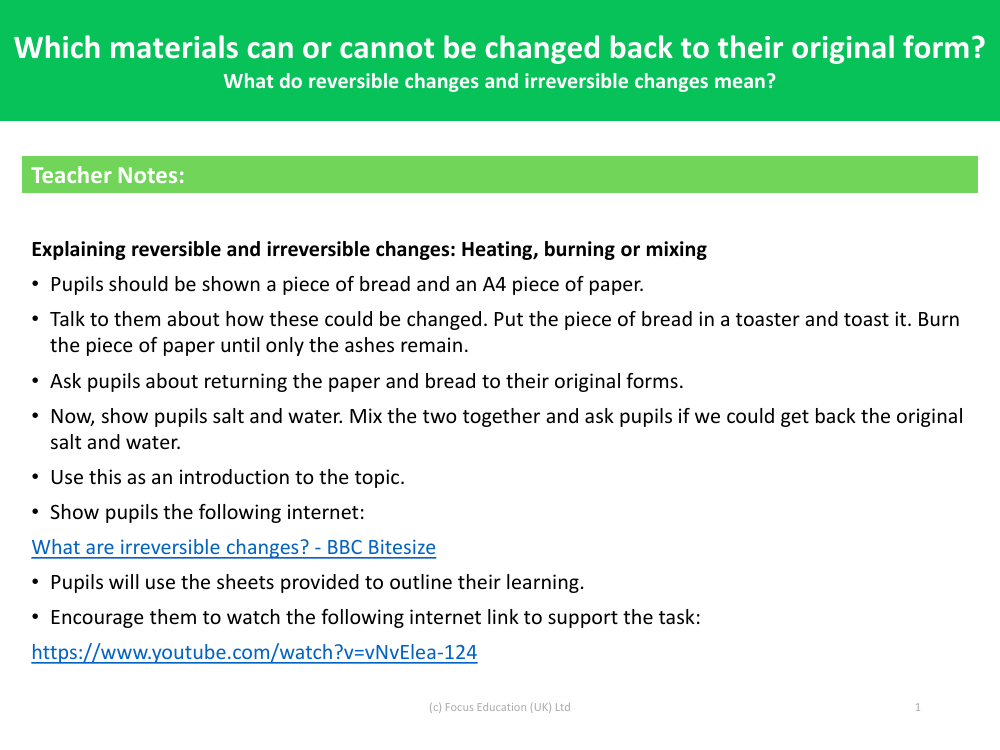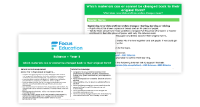What does reversible and irreversible changes mean? - Teacher notes

Science Resource Description
Reversible and irreversible changes are key concepts in understanding how different processes and reactions alter materials. Reversible changes refer to transformations that can be undone, meaning the material can return to its original state. An example of this is the dissolving of salt in water; the salt can be recovered by evaporating the water. In contrast, irreversible changes are permanent alterations where the original material cannot be easily restored to its initial form. This is demonstrated when a piece of bread is toasted or a piece of paper is burned until only ashes remain; these changes cannot be reversed, and the original bread and paper cannot be retrieved.
Teachers can introduce these concepts to pupils through practical demonstrations and discussions. For instance, by toasting bread or burning paper, pupils can visually grasp the concept of irreversible change. Similarly, by dissolving salt in water and discussing the possibility of retrieving the salt, they can understand reversible change. These activities serve as an engaging introduction to the topic, prompting pupils to think about the nature of different materials and changes. Additionally, educational resources such as videos and articles from BBC Bitesize can be used to supplement learning, offering pupils a more comprehensive understanding of what reversible and irreversible changes mean and how they differ.




